Second Panel Finished
Despite the best efforts of global warming, the second of the four panes of the Endangered Poem Sculpture is now finished, and is leaning against my dining-room wall like a shady character outside the National Museum in Cairo, ready at a moment’s notice to step forward and accost the unwary visitor in half-a-dozen languages.
The Endangered Poem Project, you’ll recall, is going to be a sculpture, roughly six feet tall, consisting of four faces, something like a cross between a totem pole and a war memorial. Once again I’m using Vermont curly maple, with each board facing one of the points of the compass and being inscribed with five endangered-alphabet texts.
As for the text, I wrote a short, simple poem about the importance of preserving endangered languages in their spoken and written forms. It goes like this:
These are our words, shaped
By our hands, our tools,
Our history. Lose them
And we lose ourselves.
This second board presented an utterly unexpected challenge. Vermont has had its wettest spring on record, with Lake Champlain standing at its highest level ever, and a constant series of thunderstorms swamping people’s basements. Two weeks ago I came across someone kayaking down our street. The same day, an impromptu surfing competition was held on a street just around the corner. For the Alphabets, the upshot was that the garage, never hitherto wet, flooded by an inch or two, and all my wood, standing against one wall, began to absorb water at the foot end and blossom with mildew. Luckily, I had spaced the Alphabets on each board with a little extra room at the foot, so last Monday saw me staggering down to Sterling Hardwoods and asking them to cut 2″ off the foot of each board. Seems to have done the trick.
In any event, I finished off the last two scripts, and here are the results, top to bottom:
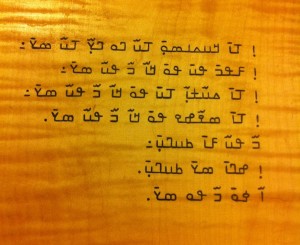
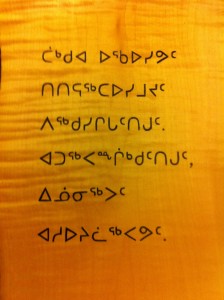
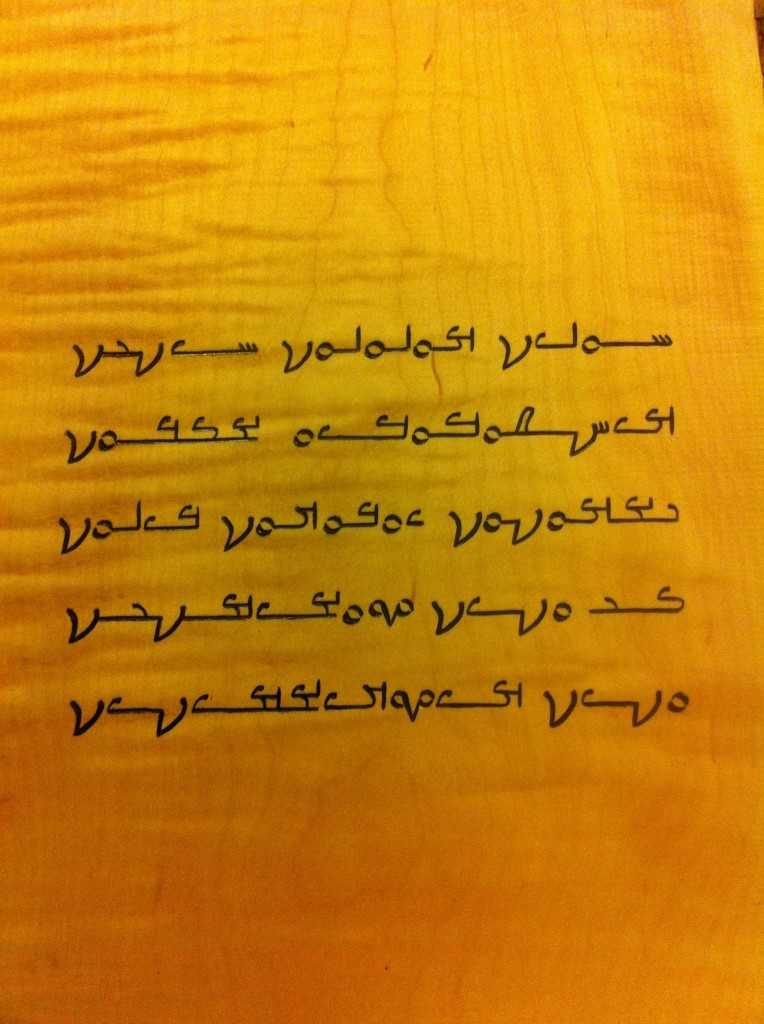
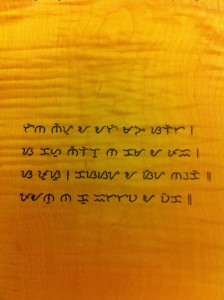
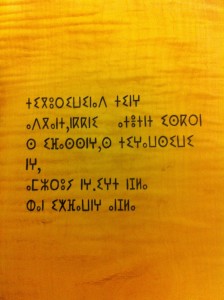
I couldn’t possibly have done this without extensive help from collaborators all over the world. For N’ko, I am deeply grateful to Christopher Ryan Green and Dwayne Rainwater; for Inuktitut, Tim Pasch and Stephane Cloutier; for Mandaic, the indefatigable Charles Haberl; for Baybayin, Paul Morrow, whose Baybayin font now actually appears on currency notes in the Philippines; and for Tifinagh, Med Amanouz.
Altogether, in recumbent state on my dining-room table, the whole piece looks like this:
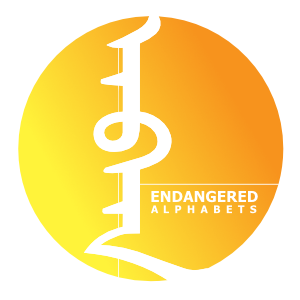
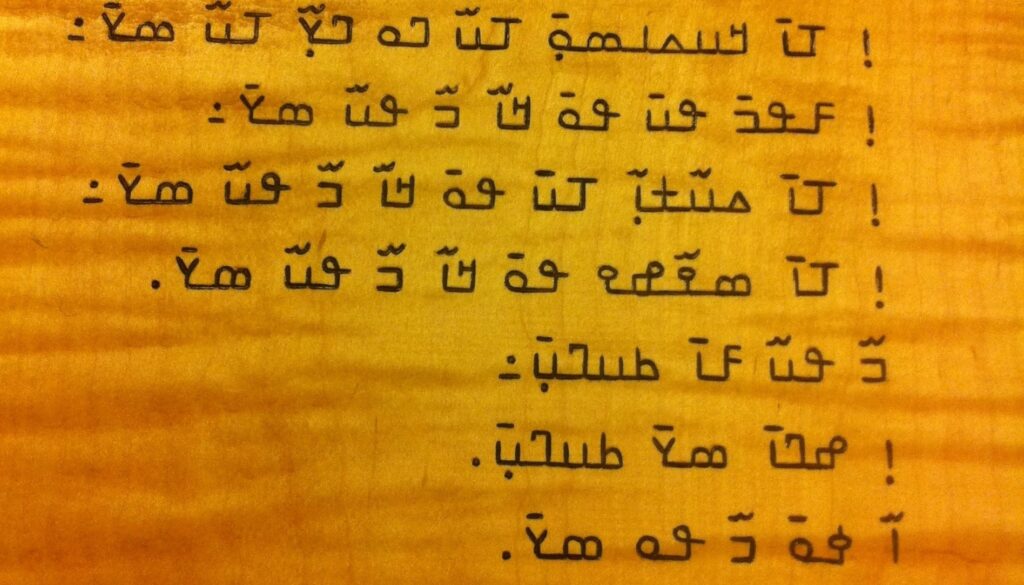
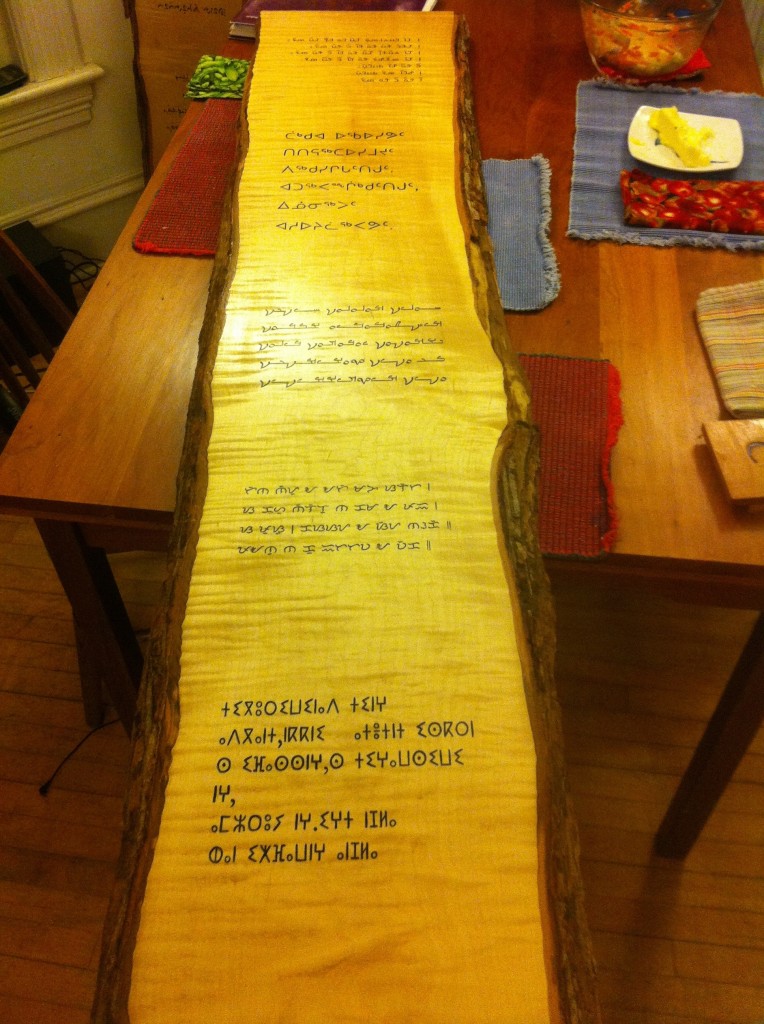
August 22, 2011 @ 8:23 am
I happened upon you through Maureen Doallas at http://writingwithoutpaper.blogspot.com and I’m so happy I did! Your project is amazing and I am in awe.
And your poem — is stunning.